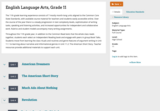
In Unit 2, students transfer the knowledge about how scientists think about and investigate medical epidemics to the study of social epidemics. Students are introduced to the topic of social epidemics through various articles that describe the basic terms and theories behind social and emotional contagion. They practice summarizing the central ideas of the articles as well as delineating and evaluating their claims. In small groups, students engage in discussions in preparation for the mid-unit assessment, a text-based discussion in which students evaluate whether the authors of an article have provided sufficient evidence and reasoning for their claims connecting social and disease epidemics.
In the second half of the unit, students learn and practice the skills necessary for completing their end of unit assessment, an informative essay that answers the question: How do social scientists use ideas from the study of epidemics to understand and explain human behavior? Students engage in the full writing process, from planning to drafting to peer critique to revision. By the end of the unit, students will be able to think critically about the latest research about how emotions, ideas, and behaviors spread. This will prepare them for further investigation of the topic in Unit 3, as they engage in their own research and develop a podcast script related to a social or disease epidemic.
In this unit, students continue to read nonfiction texts at their level as they choose independent research reading texts. Students should complete 20 minutes of independent research reading for homework when they are not reading a chapter from the anchor text. Students should also continue independent research reading over weekends.
- Subject:
- English Language Arts
- Material Type:
- Unit of Study
- Provider:
- EL Education
- Date Added:
- 05/17/2024


